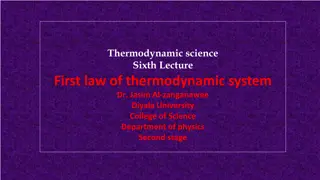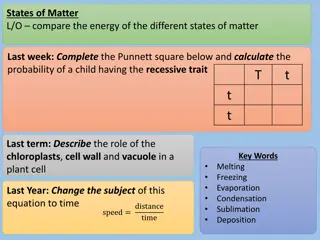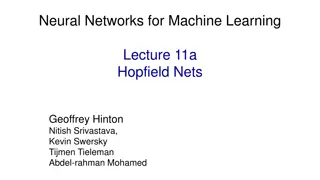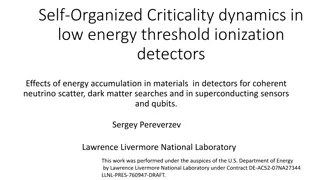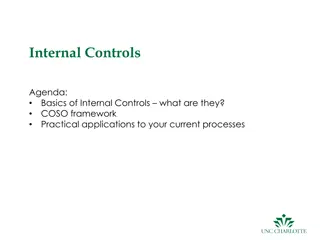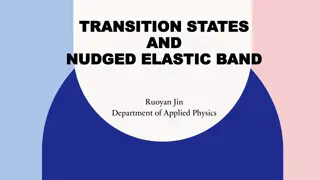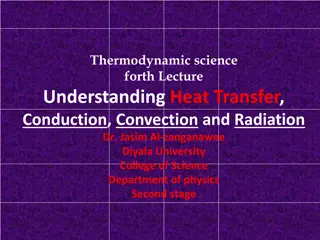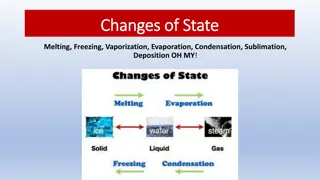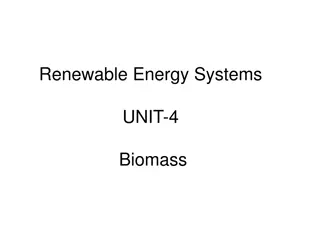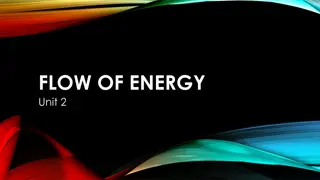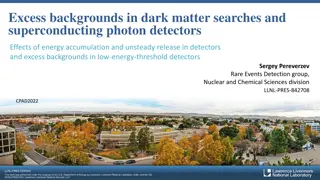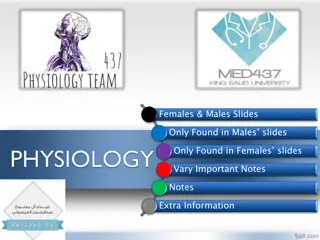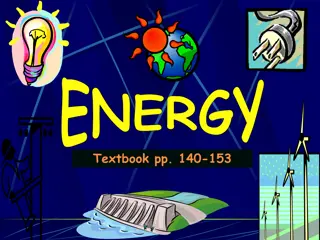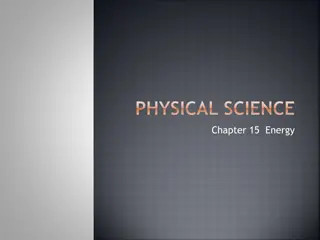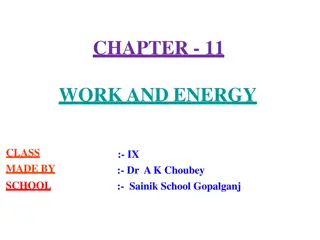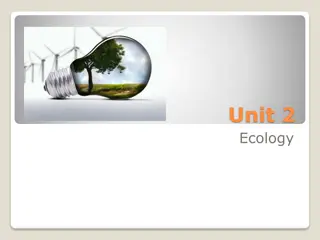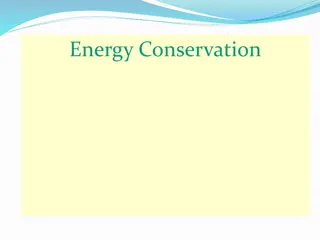Understanding States of Matter and Internal Energy
Explore the properties and arrangements of particles in solids, liquids, and gases. Understand the concept of internal energy and how heating affects particles. Learn about latent heat and the factors influencing energy changes during state transitions. Self-assess your knowledge through activities and progress indicators provided.
Download Presentation

Please find below an Image/Link to download the presentation.
The content on the website is provided AS IS for your information and personal use only. It may not be sold, licensed, or shared on other websites without obtaining consent from the author. Download presentation by click this link. If you encounter any issues during the download, it is possible that the publisher has removed the file from their server.
E N D
Presentation Transcript
Internal Energy Do now activity: 1. Draw a particle diagram for a solid, a liquid and a gas 2. Compare the arrangement of particles in a liquid to that of a gas 3. Explain what is meant by latent heat
Progress indicators GOOD PROGRESS: - Define the internal energy of a system and identify changes in state - Describe the effect heating can have on the energy of the particles in a system OUTSTANDING PROGRESS: - Explain how the strength of the bonds between the particles will affect how much energy is needed to change the state of the substance.
Gas Solid Liquid Think > Pair > Share: How would you describe the properties of each state of matter?
Task: Copy and complete the table to identify the properties and arrangement of particles in a solid, liquid and a gas. State of matter Properties Arrangement of particles Spreads out Moving around Fixed shape Spreads out Moving chaotically Almost touching Solid > > Fixed volume > Vibrating around fixed positions > Liquid > Takes the shape of the container > > > Very close to one another Gas > > Fills the space available > Moving rapidly > Extra Challenge: In which state of matter do particles have the greatest energy?
Self-assessment: State of matter Properties Arrangement of particles Solid > Fixed shape > Fixed volume > Vibrating around fixed positions > Almost touching Liquid > Takes the shape of the container > Spreads out > Moving around > Very close to one another Gas > Spreads out > Fills the space available > Moving rapidly > Moving chaotically
The energy stored by the particles of a substance is called the substance s internal energy. The internal energy of a substance is the sum of: The kinetic energy the particles have relative to their individual motions The potential energy the particles have relative to their individual positions The temperature of a substance increases Heating a substance changes the internal energy of a substance by increasing the energy of it s particles The substance changes state
Task: Watch the video and answer the following questions: https://www.youtube.com/watch?v=5WVT5NR0iLA 1. What is the name of the forces between particles? 2. Define internal energy 3. Describe what happens to the internal energy of a solid, and its physical state, when it is heated. 4. What is the name of the process which turns a solid directly into a gas? 5. What is the difference between a physical change and a chemical change?
Self-assessment: 1. Intermolecular forces or chemical bonds 2. Internal energy is the energy stored within a system by the particles. It is the sum of the total kinetic energy and potential energy of all the particles (atoms and molecules) which make up a system. 3. The internal energy of the solid will increase and at some point, the solid will melt into a liquid. If it carries on being heated the internal energy will increase further and the liquid will turn to a gas. 4. When a solid turns directly to a gas, this is called sublimation. 5. A physical change is one where if the change is reversed the substance recovers its original properties.
Mini-plenary Answer in your books
Mark Scheme: a) Range of speeds, some faster and some slower Particles are moving in different directions (random motion) 1 1 b) Internal energy 1
Forces of Attraction There are very weak forces of attraction between gas particles. The gas particles can move about at high speeds in random directions. There are weaker forces of attraction between the particles than in a solid. These weaker forces are not strong enough to hold the particles in a rigid structure. There are strong forces of attraction between particles found in a solid, these forces bond the particles in fixed positions.
Task: Complete the worksheet Key Words Vibration Speed (or energy) Size Liquid Boiling
Self-assessment: Stuck in place solid; can move past each other liquid; can break the bonds gas Vibration; size; shape; liquid; shape; size; speed (or energy); boiling; shape; size. Boiling liquid to gas; heating increasing temperature; melting solid to liquid; cooling decreasing temperature; solidifying liquid to solid; condensing gas to liquid Third and fifth statements are both correct.
True or False? The internal energy of a substance is the sum of the kinetic energy and potential energy of the particles within the substance If you apply heat energy to a substance, the energy of the particles decreases Gases have weaker forces of attraction between particles as the particles are close to one another Liquids are able to flow to fill a container Solids have a fixed shape and fixed position, the particles vibrate about a fixed position. True False False True True
Plenary What did you learn this lesson? 3 facts 3 key words 1 question to test your peers
Resources Resources
1. What is the name of the forces between 1. What is the name of the forces between physical change and a chemical change? physical change and a chemical change? energy of a solid, and its physical state, energy of a solid, and its physical state, 4. What is the name of the process which 4. What is the name of the process which 3. Describe what happens to the internal 3. Describe what happens to the internal 5. What is the difference between a 5. What is the difference between a turns a solid directly into a gas? turns a solid directly into a gas? 2. Define internal energy 2. Define internal energy when it is heated. when it is heated. particles? particles?




